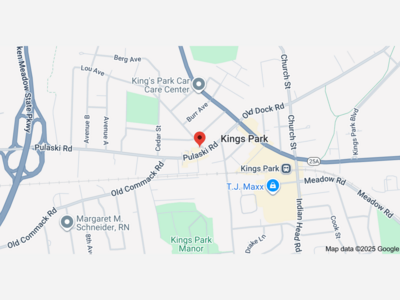"Game Changer: Long Island County Breaks Barriers, Welcomes Transgender Athletes on Girls' Teams"
Nassau County's proposed ban marks a contentious development, aiming to restrict girls' and women's teams with transgender athletes from accessing county facilities. This move is part of a broader trend across the nation where similar measures are being considered, reflecting a growing debate over the participation of transgender individuals in women's sports. Advocates of such bans argue that they are necessary to ensure fair competition and maintain the integrity of women's athletics. However, critics assert that these measures perpetuate discrimination and stigmatize transgender individuals, denying them equal opportunities. The Nassau County ban, if implemented, would have significant implications for the inclusivity and diversity of sports within the region, sparking discussions about the intersection of identity, equality, and competitive fairness in the realm of women's athletics.
In a significant move, Nassau County Executive Bruce Blakeman, who identifies as a Republican, signed an executive order on Thursday that mandates any sports league or organization seeking to utilize facilities within the county parks department to explicitly designate their teams as male, female, or coed. This designation is to be based on the members' assigned sex at birth. The executive order, taking effect immediately, introduces a new layer of regulation to sports activities within Nassau County. By requiring such explicit gender categorization, the order aims to address concerns related to competitive fairness and the evolving landscape of transgender participation in sports. However, the order's legality under the state's human rights law remains uncertain, raising questions about its potential implications for equal rights and anti-discrimination measures. The fact that the policy does not require legislative approval indicates a decisive and prompt implementation, heightening the urgency of discussions surrounding the intersection of sports, gender identity, and legal frameworks in Nassau County. The order's immediate enforcement will likely prompt a range of reactions and further scrutiny as stakeholders assess its impact on both the county's sports community and the broader conversation about transgender rights.
Bruce Blakeman's executive order in Nassau County reflects a broader trend seen across the United States, as officials grapple with the question of transgender athletes participating in sports that align with their gender identity, particularly in girls' and women's categories. Blakeman's move adds Nassau County to the list of regions taking steps to restrict transgender individuals from competing on teams consistent with their gender identity at birth. Notably, the order does not extend its restrictions to transgender boys and men, allowing them to participate on boys' and men's teams. This nuanced approach attempts to address concerns related to competitive fairness while navigating the complex landscape of transgender rights. The nationwide push to enact such measures has gained momentum, with over 20 states passing laws in recent years that restrict transgender athletes from participating in school sports on teams corresponding to their gender identity. The executive order in Nassau County contributes to the ongoing dialogue about inclusivity, fairness, and the rights of transgender individuals in organized sports across the country.
The recent executive order by Nassau County Executive Bruce Blakeman aligns with a broader national context where the issue of transgender athletes in sports, particularly in girls' and women's categories, has become a focal point of legislative discussions. Notably, last year, the Republican-controlled House of Representatives approved a bill that aims to prohibit transgender women and girls from participating in women's sports. This bill, however, faces substantial challenges in progressing through the legislative process. With Democrats in control of the Senate and President Biden in the White House, the bill is unlikely to secure passage and presidential approval. The stark political divide on this issue reflects the ongoing debate surrounding transgender rights, gender identity, and the principles of fairness and inclusivity in competitive sports. The complex interplay of legislative initiatives at various levels of government adds layers to the broader national conversation about the rights and participation of transgender individuals in organized sports.
The executive order signed by Nassau County Executive Bruce Blakeman on Thursday is poised to have a widespread impact, influencing thousands of teams across all levels that compete at Nassau County facilities. From local youth leagues to collegiate events, the directive, which requires teams to explicitly designate themselves as male, female, or coed based on assigned sex at birth, could reshape the landscape of sports competitions within the county. Notably, even collegiate-level events, such as the Big East Conference's swimming championship, held in Nassau County last year, may be subject to these new regulations. The Big East Conference, home to 11 college athletics programs, has not yet provided a comment in response to the executive action. The swiftness of the backlash against the order underscores the contentious nature of policies that address transgender participation in sports and the potential far-reaching consequences on diverse athletic communities within Nassau County. As debates unfold, stakeholders from various levels of sports organizations are likely to voice their opinions, further fueling the ongoing national conversation around gender identity, inclusivity, and competitive fairness in sports.
David Kilmnick, the president of the L.G.B.T. Network, a nonprofit organization based on Long Island and in Queens, strongly criticized the executive order signed by Nassau County Executive Bruce Blakeman. Kilmnick condemned the move, labeling it as discriminatory and asserting that it undermines the fundamental principles of inclusivity and fairness. He highlighted the potential perpetuation of harmful stereotypes and the exclusionary impact such policies can have on transgender individuals. This statement reflects the concerns of advocacy groups and activists who argue that restrictions on transgender participation in sports can have broader societal implications, reinforcing discriminatory practices and inhibiting the principles of equal rights and inclusiveness. The response from organizations like the L.G.B.T. Network underscores the importance of ongoing dialogues around LGBTQ+ rights and the intersections of identity and policy within local communities like Nassau County.
The criticism against Nassau County Executive Bruce Blakeman's executive order continued as David Kilmnick, president of the L.G.B.T. Network, emphasized that New York State law explicitly safeguards the rights of transgender individuals. Kilmnick asserted that the state's legal framework ensures equal participation for transgender individuals in all aspects of life, explicitly mentioning sports. He went on to characterize any attempt to enforce a ban on transgender individuals in sports as futile and legally untenable, reinforcing the view that such measures could face significant legal challenges. This perspective aligns with broader discussions on the legal landscape surrounding transgender rights, emphasizing the need for policies that adhere to existing anti-discrimination laws and uphold principles of equality and inclusivity. The clash between local executive actions and state-level legal protections underscores the complexities surrounding LGBTQ+ rights and the evolving nature of policies at different levels of governance.
Bobby Hodgson, the director of L.G.B.T.Q. Rights Litigation at the New York chapter of the American Civil Liberties Union (ACLU), issued a strong statement asserting that Nassau County Executive Bruce Blakeman's executive order is illegal. Hodgson declared that the ACLU would explore all available options to halt the implementation of the order, signaling a commitment to legal action in response to what is perceived as a violation of transgender individuals' rights. This stance from the ACLU adds a significant legal dimension to the controversy, suggesting that the executive order may face legal challenges on the grounds of constitutionality and adherence to state and federal anti-discrimination laws. As the situation unfolds, the clash between local policies and civil liberties advocacy underscores the complex legal terrain surrounding LGBTQ+ rights and the potential legal battles that may arise in defense of transgender individuals affected by such measures.
Jami Taylor, a political science professor at the University of Toledo and an expert on L.G.B.T. politics, expressed her views in an interview, criticizing Nassau County Executive Bruce Blakeman for allegedly ignoring both state law and a precedent set by the Supreme Court with the signing of the executive order. Taylor pointed to the New York human rights law, which designates gender identity and expression as a protected class in various areas, including employment, places of public accommodation, public and private housing, educational institutions, and credit. She specifically noted that county sports facilities would fall under the category of places of public accommodation, emphasizing the legal protections afforded to transgender individuals in such spaces.
According to Taylor, the executive order appears to be part of a broader political strategy employed by Republicans on a national scale, particularly in an election season. She characterized the move as an attempt to leverage the transgender rights issue as a focal point in the broader cultural and political landscape, framing it as a "culture war issue" that Republicans believe may be advantageous in shaping public opinion. This perspective sheds light on the potential motivations behind such executive actions, emphasizing the intersection of legal considerations, political strategy, and the ongoing national discourse on transgender rights.
As legal experts and advocates weigh in, the clash between local policies and broader legal frameworks underscores the complexity of navigating LGBTQ+ rights in the realm of sports. The executive order's potential alignment with broader political agendas introduces a layer of complexity to the situation, emphasizing the interconnectedness of legal, social, and political considerations in the ongoing debate over transgender rights.
The legal landscape surrounding transgender rights received notable precedent in 1977 with the Supreme Court's ruling in Richards v. United States Tennis Association. The case involved Renée Richards, one of the first openly transgender professional athletes, challenging the tennis association's requirement for her to pass a sex chromatin test in order to compete in the women's draw at the U.S. Open. The Supreme Court's decision rejected the discriminatory requirement, acknowledging Richards' right to compete based on her gender identity. The New York state guidance on gender identity protections highlights this historical legal recognition, noting that sex discrimination claims under the Human Rights Law can be brought by individuals facing discrimination due to their gender identity. This legal context underscores the longstanding acknowledgment of gender identity as a protected category.
Assemblywoman Gina Sillitti, a Democrat representing parts of Nassau County, criticized County Executive Bruce Blakeman's executive order, suggesting that it was a move to gain political attention. Sillitti expressed concerns that the order, rather than addressing a genuine issue, may contribute to a culture of hate towards transgender children. She emphasized the power of words in shaping public perceptions and stressed the potential consequences of inflammatory rhetoric, linking it to the possibility of fostering negative attitudes and actions. Sillitti's remarks reflect a broader concern among some lawmakers about the potential societal impact of executive actions that target transgender rights, emphasizing the need for responsible governance in discussions surrounding LGBTQ+ issues.
Bruce Blakeman, a seasoned figure in Long Island politics, secured the position of Nassau County Executive in 2021 through a campaign marked by staunch opposition to mask mandates. This stance resonated with segments of suburban parents and businesses who were dissatisfied with such requirements. Blakeman's campaign also emphasized key issues such as crime and bail reform, aligning with the broader priorities of his political base. His victory in the 2021 election, part of a larger trend of GOP successes in Nassau, elevated him to hero status within state Republican circles. Blakeman's high-profile appearances on Fox News further bolstered his reputation as a figurehead of Republican values and an advocate for positions aligned with conservative principles.
The political landscape in Nassau County during Blakeman's campaign reflected the broader political dynamics at play, with issues such as pandemic-related mandates and criminal justice reforms taking center stage. The alignment of his platform with the sentiments of his constituency contributed to his success and solidified his standing within the Republican party. As he navigates controversial executive orders, including those related to transgender rights in sports, Blakeman's political trajectory continues to be shaped by a combination of local concerns, national party dynamics, and his role as a prominent figure in the media.
Nassau County, despite being a region with a population of approximately 1.4 million people, is characterized by political diversity, challenging the perception of it as a monolithic GOP stronghold. The county boasts more registered Democrats than Republicans and nearly 300,000 nonaffiliated voters, illustrating a moderate disposition that plays a crucial role in local elections. This political landscape was evident in a recent special election in the Third Congressional District, a majority of which is situated in Nassau County, where Democrat Tom Suozzi secured a victory.
County Executive Bruce Blakeman's approach, particularly in signing the executive order related to transgender athletes, is part of a larger political narrative in Nassau. The county's nuanced political composition reflects the complexity of local dynamics, where issues such as gender identity, sports, and inclusivity intersect with broader political affiliations. Blakeman's alignment with national Republican messaging, as seen in his appearance at a news conference alongside Kim Russell, a former women’s lacrosse coach critical of the inclusion of transgender women in women’s sports, underscores the broader cultural and political debates shaping local governance.
The news conference, featuring school-aged girls holding signs advocating for the protection of women's sports, emphasized a perspective that contends with evolving norms around gender and sports participation. Russell's presence and the messaging from the event reflect concerns about the impact on female athletes and opportunities in the context of evolving policies. The intersection of political, social, and cultural dynamics in Nassau County provides a backdrop for ongoing discussions about the role of government in addressing these complex and sensitive issues.
During the news conference, when asked about the number of transgender athletes competing in Nassau County, County Executive Bruce Blakeman acknowledged that he did not have that specific information. Without providing a source, he mentioned that less than 1 percent of the county's residents identified as transgender. However, he was uncertain about the number of transgender athletes, if any, participating in county facilities. Instead, Blakeman referred to instances of transgender girls competing on women's teams outside of New York, emphasizing his desire to proactively address the issue in Nassau County.
As he signed the executive order, a group of protesters gathered outside the county executive and legislative building, expressing dissent with chants of "Trans kids are our kids." The presence of these protesters reflects a broader societal dialogue around the rights and inclusion of transgender individuals, particularly in the realm of sports. The lack of specific data on transgender athletes in Nassau County adds a layer of complexity to the decision-making process, raising questions about the evidence and motivations behind the executive order. The controversy surrounding the order highlights the challenges of addressing sensitive issues without comprehensive data and in the face of public dissent.
Juli Grey-Owens, the executive director of Gender Equality New York, provided context to the transgender population in Nassau and Suffolk Counties, estimating that the combined population of around 2.9 million is home to approximately 17,000 transgender people. However, Grey-Owens raised a crucial point regarding the broader issue at hand, questioning the prevalence of transgender athletes participating in local women's and girls' sports. She emphasized that when this question is posed, there is often a lack of a concrete answer, suggesting that efforts to regulate transgender participation in sports may be driven by a perceived problem rather than a substantiated need.
Grey-Owens' assertion that such measures represent a "solution looking for a problem" underscores a recurring concern in discussions surrounding transgender rights and sports policies. The absence of specific data on the number of transgender athletes involved in local sports complicates the assessment of the necessity and impact of executive orders like the one signed by County Executive Bruce Blakeman. As debates on these issues continue, the need for accurate and comprehensive information to inform policy decisions remains a critical aspect of ensuring fair and equitable treatment for all individuals involved.
For updates, subscribe to our free newsletter!
Support your local news!
More News from Nassau
- Man Arrested After Burglarizing House after Child Calls Police Suffolk Police Arrested a 53-year-old Man for allegedly breaking into a Medford home yesterday afternoon.
- Central Islip Man Arrested Following Road Rage Incident Suffolk County Police Arrested a Central Islip Man Wednesday following a road rage incident that occurred Saturday morning.




